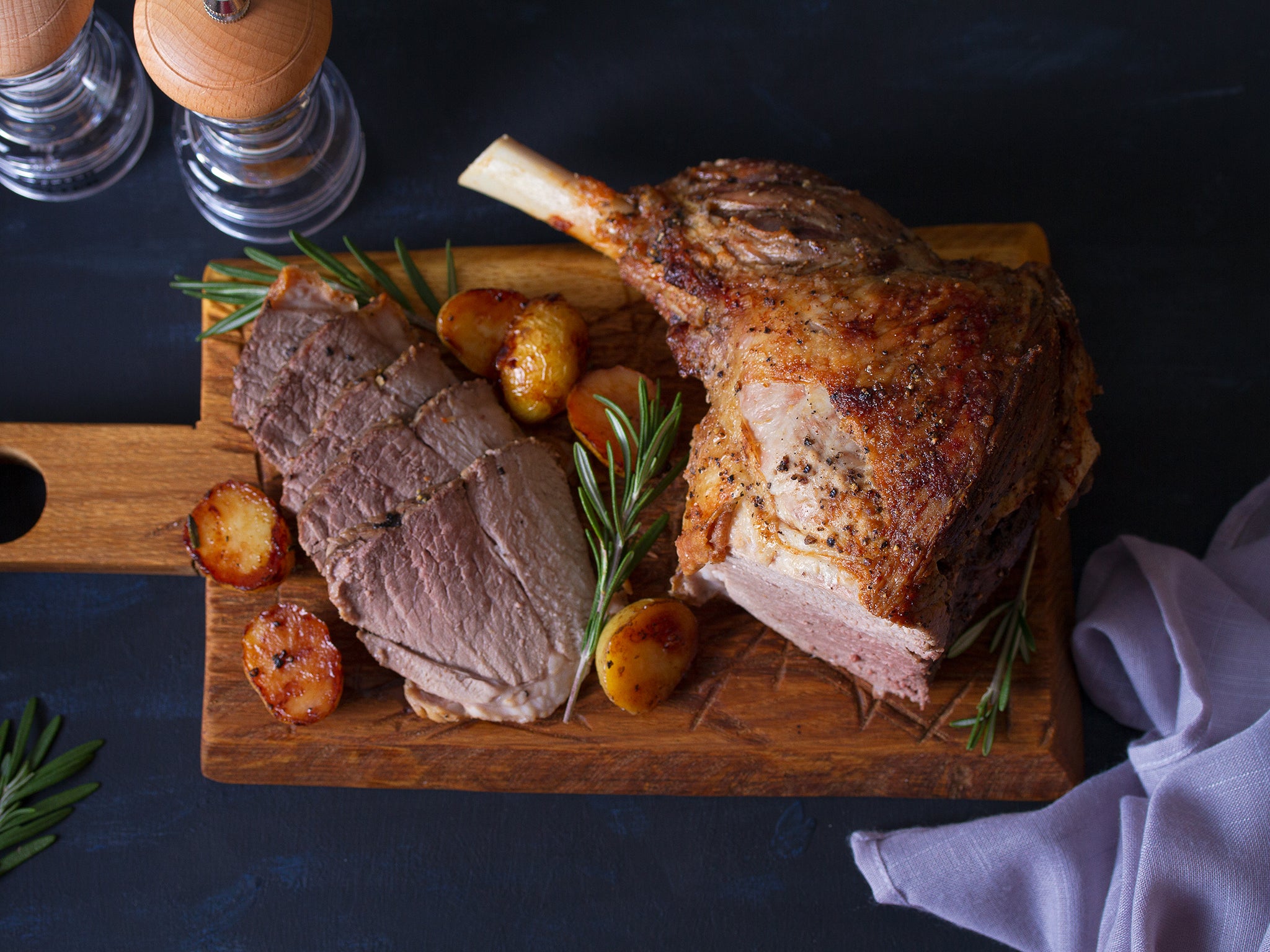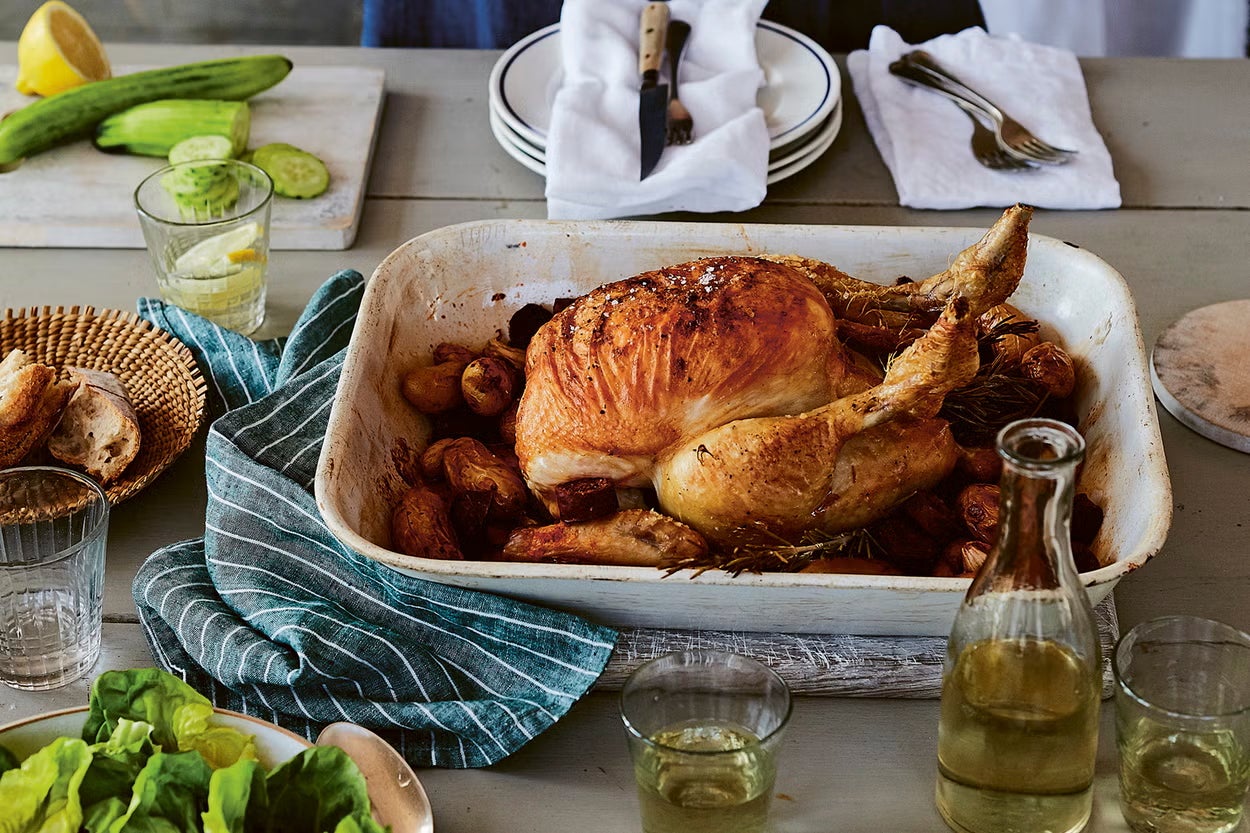[ad_1]
Few meals are as sacred to the British calendar as the Easter roast. It’s a rite of spring – a chance to gather round the table with loved ones, make a proper fuss over seasonal veg and bask in the satisfying clatter of carving knives and gravy boats. But nothing spoils the occasion quite like overcooked lamb or chicken that’s been roasted into oblivion.
So whether you’re feeding a flock or keeping it low-key, this guide is your culinary wingman. We’ll walk you through exactly how long to cook each type of meat – from classic Easter lamb to juicy roast chicken – with tips on temperatures, timings and how to dodge the dreaded dry bird. Because if you’re going to spend £30 on a beautiful joint, it deserves better than guesswork.
Before we begin: A few roasting ground rules
Let’s get one thing out of the way: the best roast is one that’s properly rested. Let your meat sit once it’s out of the oven – 15 minutes minimum, up to 30 for larger joints. It gives the juices time to redistribute and saves you from a carving board awash with regret.
A meat thermometer isn’t essential, but it is the difference between “This is perfectly done” and “Is this safe to eat?” Aim for the internal temperatures listed below. No poking, no slicing mid-roast. Just trust the science – and your thermometer.
Oh, and unless otherwise stated, all timings here are based on an oven set to 180C fan (200C conventional/gas mark 6).
Roast meat cooking times: The main players
Lamb

The undisputed champion of the Easter table. Think rosemary, garlic and the intoxicating scent of fat crisping up in the oven.
- Leg of lamb: Roast for 25 minutes per 500g, plus an extra 25 minutes for luck.
- Shoulder of lamb: Wants a slow cook – 5 hours at 160C for a 2kg shoulder gives you melting, pull-apart glory.
- Top tip: Stud with slivers of garlic and rosemary and rest for at least 20 minutes before carving.
Beef

Ideal if you’re feeding a crowd who like their meat anywhere between still-mooing and sacrificially charred.
- Topside or sirloin: Roast for 20 minutes per 500g, plus 20 minutes.
- Chef’s trick: start with a 20-minute blast at 220C to get a rich crust, then drop to 180C for the remainder.
Pork

Juicy when cooked right, a chewy horror show when it’s not. Crackling, of course, is the prize.
- Loin or shoulder: Roast for 30 minutes per 500g, plus 30 minutes.
- Crackling tip: score the skin, salt it generously and give it an initial 20-minute hit at 230C before turning it down.
Chicken

The humble roast bird gets a bad rap, but done right, it’s juicy, deeply flavourful and infinitely versatile.
- Whole Chicken: Roast for 20 minutes per 500g, plus 20 minutes.
- Pro tip: Roast breast-side down for the first half of cooking for a juicier bird, then flip to brown the skin.
Turkey (if you’re going big this year)

Not just for Christmas – turkey can be a great alternative for feeding a crowd, especially if you’re after a leaner meat.
- Whole Turkey: same rule as Chicken – 20 minutes per 500g, plus 20 minutes.
- Top tip: cover with foil for most of the Roast, removing it for the final 30 minutes to crisp the skin without drying out the meat.
Quick reference table: Meat cooking times and temperatures
Here’s your cheat sheet – screenshot it, stick it to the fridge or commit it to memory if you’re feeling brave.
Meat | Cut | Oven temp | Time per 500g | Plus | Internal temp | Rest time |
Lamb | Leg | 180C fan | 25 mins | 25 mins | 60-65C (medium) | 20-30 mins |
Lamb | Shoulder (slow) | 180C fan | ~5 hrs (2kg) | – | Falls apart | 20+ mins |
Beef | Topside/sirloin | 180C fan | 20 mins | 20 mins | 50C (rare)-70C+ | 20 mins |
Pork | Loin/shoulder | 180C fan | 30 mins | 30 mins | 70C | 15-20 mins |
Chicken | Whole | 180C fan | 20 mins | 20 mins | 75C (thigh) | 15 mins |
Turkey | Whole | 180C fan | 20 mins | 20 mins | 70-75C | 30+ mins |
FAQs: Because you will be asked
What if I don’t have a thermometer?
Use the skewer test – pierce the thickest part of the meat and check that the juices run clear, not pink. Not as foolproof, but better than nothing.
Can I cook more than one meat at once?
You can – just be mindful of oven space, cross-contamination and different timings. Start longer-cooking joints earlier and stagger the rest.
How long can I rest meat before it goes cold?
Up to 30 minutes. Just tent loosely with foil and keep it in a warm (not hot) place. Resting improves flavour and texture, so don’t skip it.
Is it safe to eat lamb or beef pink?
Yes – as long as it’s a whole cut and not minced. Pork and poultry, on the other hand, must be cooked through.
Final tips
- Warm your plates – cold crockery ruins hot food.
- Don’t overcrowd the oven. Airflow matters.
- Use resting juices for gravy (liquid gold).
- Let the meat be the star – but don’t skimp on crisp roasties, verdant greens, or a sharp mint sauce.
A perfect roast isn’t about faff – it’s about precision. Know your timings, check your temperatures and trust that a rested joint is a flavourful one. Whether you’re serving lamb studded with rosemary or crisp-skinned chicken with lemon and thyme, this Easter, let the meat shine. And if all else fails? Pour another glass of wine. Gravy forgives most sins.
[ad_2]
Source link



